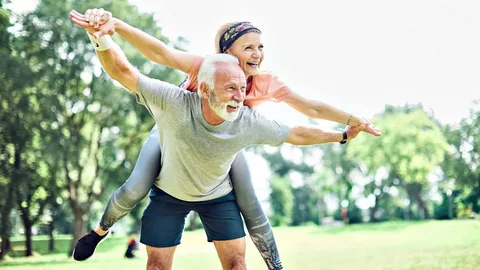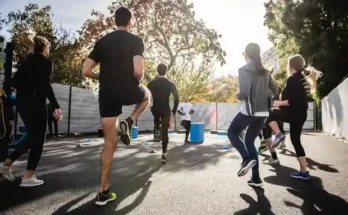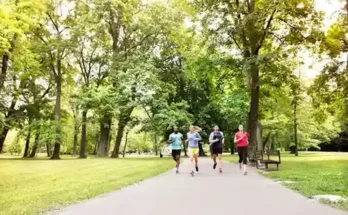Fitness is not a seasonal trend or a fleeting goal set in January and forgotten by March. It is the foundation of a vibrant, fulfilling, and successful life. It doesn’t matter if you are a teenager with big dreams, a working adult balancing responsibilities, or a senior citizen enjoying retirement—fitness is essential for everyone, regardless of age or gender. It is the common thread that strengthens our body, sharpens our mind, and fuels our potential.
In a world that often prioritizes appearance over well-being, it’s time we redefine fitness as a personal commitment to health, longevity, and excellence. Let’s explore how fitness impacts every stage of life and how we can cultivate it consistently, no matter where we are on the timeline.
A Universal Requirement for Success:
-
Beyond the Body
Fitness is more than lifting weights or running on a treadmill. It’s the synergy between physical health, mental clarity, and emotional resilience. When we are physically fit, our bodies move with ease, our minds focus with greater precision, and our energy levels allow us to face each day with vigor. Success in any area of life—be it career, relationships, academics, or personal growth—demands a body that can keep up and a mind that won’t give up.
When you’re fit, your confidence soars. You communicate better, work smarter, sleep deeper, and stress less. It’s not just about having a six-pack or fitting into smaller jeans; it’s about showing up as your best self, every single day.
-
Fitness is Not Gendered, and It Knows No Age
One of the most liberating truths about fitness is that it doesn’t discriminate. Whether you’re male, female, young, old, or somewhere in between, your body was designed to move, strengthen, and evolve. Too often, fitness is marketed in a way that targets certain age groups or genders, but the reality is this: everyone benefits from being active.
From kids developing coordination and discipline, to adults managing stress and staying productive, to seniors preserving independence and vitality—fitness is a universal prescription. And the best part? It’s never too early or too late to start.
Childhood and Teen Years:
In childhood and adolescence, fitness forms the backbone of physical development. Regular movement boosts bone density, improves posture, and promotes healthy growth. But perhaps more importantly, it teaches discipline, teamwork, and perseverance—qualities that shape future leaders.
Children who engage in sports or physical play tend to have better concentration, mood regulation, and social skills. They’re more likely to carry those habits into adulthood, which sets the stage for a lifetime of health and success.
Parents and guardians play a critical role in encouraging these behaviors by modeling active lifestyles themselves and making fitness fun rather than a chore.
Adulthood:
As we enter adulthood, life speeds up. Careers demand time, families grow, and responsibilities multiply. This is when fitness often takes a backseat, and yet, it’s the time we need it most. Exercise becomes our anchor in a sea of deadlines and distractions.
Staying active during adulthood helps regulate stress hormones, improve cardiovascular health, and maintain a healthy weight. It increases productivity, mental clarity, and emotional stability—vital assets in any profession or personal endeavor.
Simple routines like a 30-minute morning walk, home yoga, or lunchtime gym sessions can work wonders. Consistency is more powerful than intensity. What matters most is showing up, not showing off.
Though men and women may have different biological needs, the ultimate goal remains the same: holistic well-being. Women may benefit from strength training to combat osteoporosis, while men may focus on heart health and endurance. But both need a blend of cardio, strength, flexibility, and rest.
Social stigmas and unrealistic beauty standards often derail fitness motivation. Breaking free from these pressures and focusing on what your body can do—rather than how it looks—leads to lasting, meaningful results.
Senior Years:
Contrary to common belief, fitness becomes more important as we age. Muscles may weaken, joints may stiffen, and balance may decline—but regular movement can slow or even reverse many of these effects. Exercise for seniors isn’t about running marathons. It’s about staying strong enough to lift groceries, climb stairs, or dance with grandkids.
Simple activities like tai chi, walking, swimming, or light resistance training improve mobility, reduce the risk of falls, and enhance mental well-being. Regular exercise also lowers the risk of chronic diseases such as diabetes, arthritis, and dementia.
Fitness is the ultimate key to living not just longer, but better. A strong body supports a strong spirit.
How to Stay Fit at Every Age?
-
Tailoring Fitness to Your Life Stage
Every age comes with its unique set of physical capabilities and limitations. That’s why fitness routines should be age-appropriate, enjoyable, and sustainable. In youth, high-intensity sports or dance may be the spark. In midlife, a mix of cardio, resistance, and mindfulness activities like yoga can strike the perfect balance. In later years, focus on movement that preserves joint health and balance.
Listening to your body is critical. If something hurts, pause and adjust. Fitness is not about pushing through pain—it’s about progress through care and awareness.
-
Nourishment
You can’t out-exercise a bad diet. Regardless of age, your body needs proper nutrition to repair, rebuild, and thrive. A balanced intake of whole foods—lean proteins, fruits, vegetables, healthy fats, and complex carbs—fuels performance and recovery.
Hydration is just as important. Water supports every metabolic function, from muscle contraction to brain clarity. As we age, our sense of thirst may diminish, so conscious hydration becomes crucial, especially for seniors.
The Mind-Body Connection:
Fitness isn’t only about the body—it’s therapy for the mind. Exercise triggers the release of endorphins, our natural mood boosters. It reduces symptoms of anxiety and depression, improves sleep, and fosters a sense of accomplishment.
People of all ages can benefit from this emotional uplift. For students facing academic pressure, parents navigating family life, or retirees coping with loneliness, exercise provides an emotional anchor. It’s a powerful tool to manage life’s inevitable stresses.
Meditative forms of fitness, like yoga or tai chi, enhance this mind-body connection, combining movement with breath and awareness. These practices don’t just improve flexibility; they build inner peace.
Conclusion:
Fitness is not a destination—it’s a lifelong relationship. It evolves with you, adapts to your changing needs, and rewards you at every turn. Whether you’re a child learning to ride a bike, an adult conquering your first marathon, or a grandparent walking daily in the park, every step counts.
The most successful people across all walks of life share this secret: they care for their bodies like they care for their dreams. Because without health, no success can be fully enjoyed.
So, move daily. Stretch often. Eat well. Rest intentionally. Laugh freely. Let fitness be your lifelong companion—not just for looking good, but for living fully. No matter your age, it’s always the right time to start.




